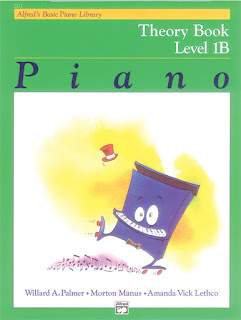At the end of the school year I prepare an action guide and notes page for my students. We go over all the information we've learned together and apply it to these 6 sections. It usually takes an eager child with strong discipline of piano practice to complete 1 level per year. Sometimes a self motivated pianist will accomplish several levels within the year. I think that's awesome! Keep in mind that everyone learns at a different rate and it really is okay!!
I wanted to share some of the different levels with you each week. Take a look at the guide and see where you are in your studies and set some goals for yourself for the following year. Must give credit to KMTA (Kansas Music teachers Association) for this great teaching template I've modified a bit. In addition, I've included some of my own articles.
Level One
1. Performance: Play songs.Memorized Solo and Contrasting Solo in Style
Ten Tips for Memorizing Music
2. Music Understanding and Vocabulary: Fill in blanks.
My piece is ___. Tempo ___. Dynamic ___. Mood ___.
Define 5 music terms / symbols from one or two songs. Ex: ____ means ____.
Does Loud Also Mean Fast?
3. Functional Skills:
A. Rhythm / Pulse Development
Count aloud a rhythm with quarter, half and whole notes (metronome at 72).
B. Sight-Playing:
Play a 4-8 measure piece in Middle C position, counting encouraged.
--hands separate
--no accidentals
--quarter, half & whole notes
--steps & skips only
C. Keyboard FacilityPrepare 5 pentascales, tetrachord or one octave scales: major, minor, white or black keys,
hands separate or together. Keys: __ __ __ __ __. Play a matching shell or triad.
Rhythm in Music
4. Applied Theory: Play
a. Steps and skips on the white keys, up and down.
b. Whole and half step from a white key, up and down.
5. Written Theory: Write answers about
a. Number of beats for quarter notes and rests, half and whole notes.
b. Treble and bass clefs, forte and piano symbols.
c. Direction of notes on the staff: up, down, or repeating.
d. Steps and skips up and down on the staff and keyboard.
e. Whole and half steps on the keyboard.
f. Letter names of notes on a keyboard, on the staff from the first line bass G to fifth line treble F.
David Carr Glover Piano Library / Piano Theory / Level 1
Alfred's Basic Piano Library: Theory Book Level 1B
6. Listening: Answer questions verbally
a. High, low and middle sounds.
b. Forte and piano sounds.
c. Direction of 5 notes (up, down, or repeating).
d. Pulse of a song (clapping along).
e. Which one of two descriptions matches a piece played for you.
www.good-ear.com
It's thrilling to be winding down the school year!
*affiliate links in post*
All the best,
"The beautiful thing about learning is that no one can take it away from you." B.B.King



No comments:
Post a Comment
So nice to hear from you!